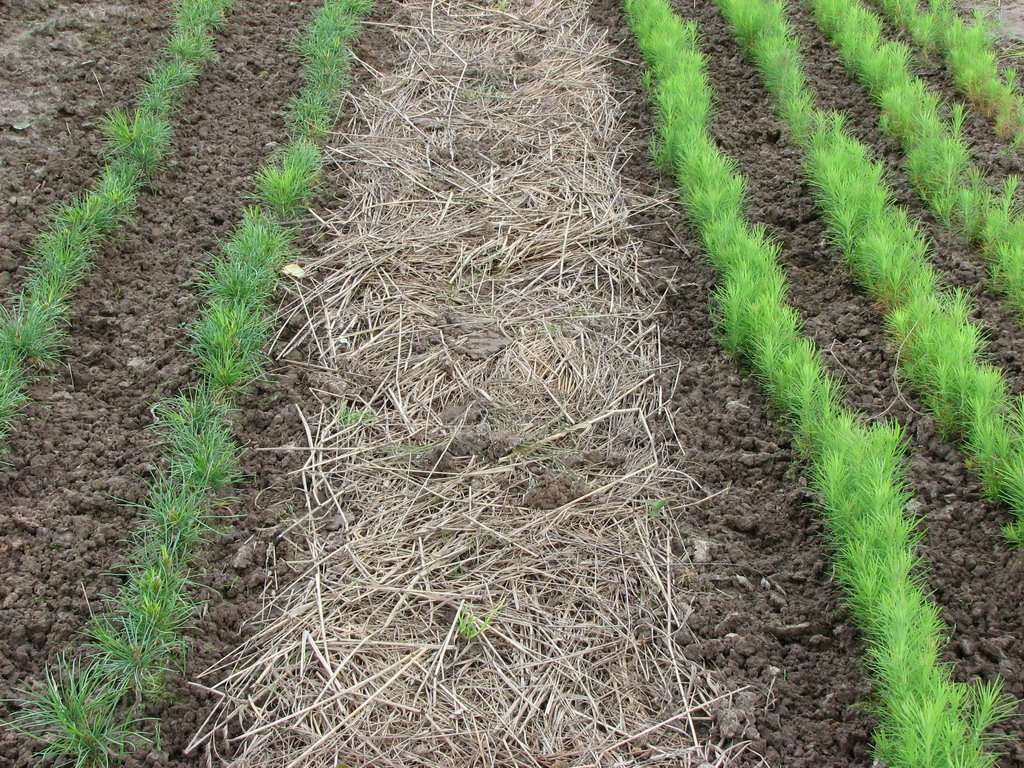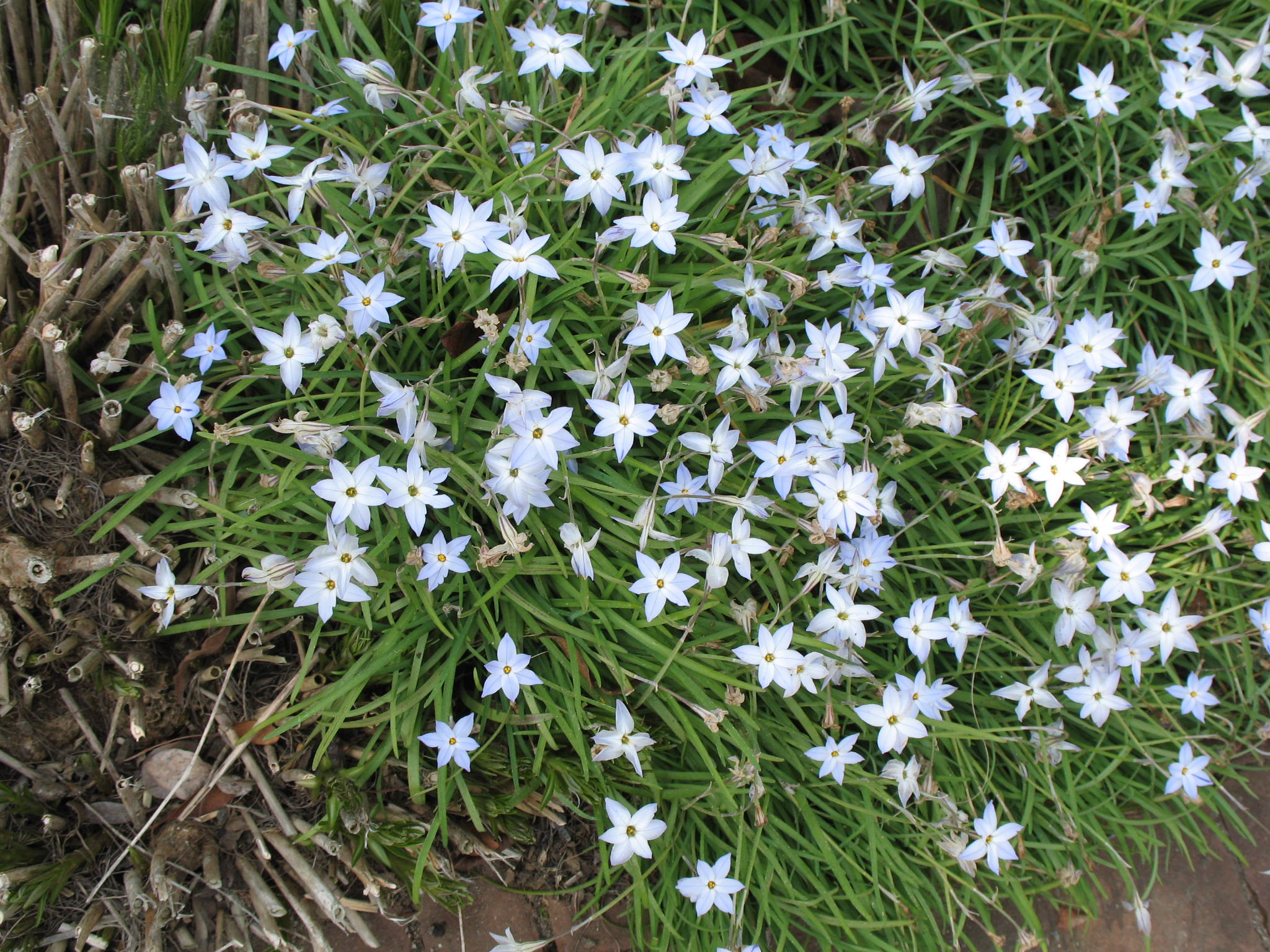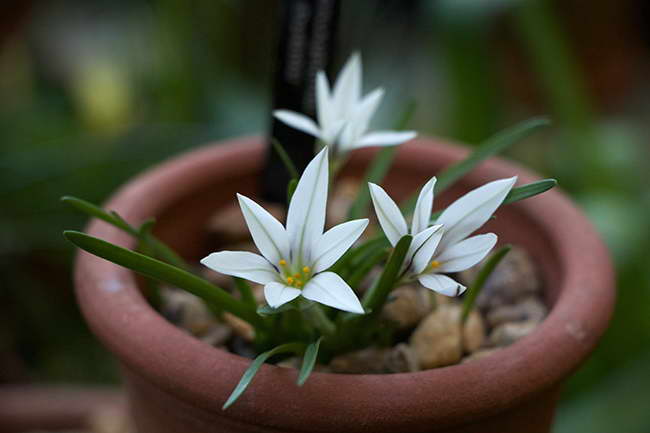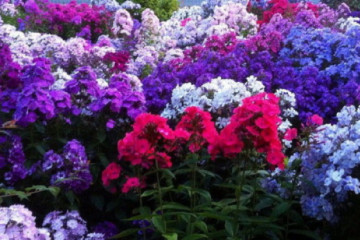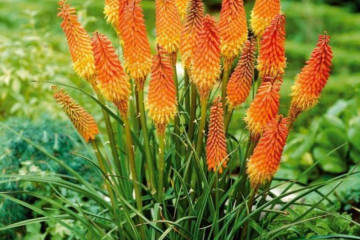Ifeion flowers - planting and care in the open field
Content:
Not every gardener dreams of large shrubs, and there are many who prefer short plants with beautiful lingering flowering. The South American Ifeion is a wildly flowering tropical plant that can thrive outdoors in the southern latitudes of Russia. In areas with harsh climates, it can be easily grown as a houseplant and can be admired for several months in a row.
Types and varieties of ifaeon
Ifeion is a small flower, only about 20 cm in height. Its green part can be compared to broad-leaved grass, since it has no shoots, foliage grows directly from the bulbs. If you rub it, you can hear a light onion aroma. The plant loves moisture, under natural conditions it grows in a humid warm climate, where the air and soil do not dry out. Botany classifies Ifeion as a member of the Liliaceae family.
Breeders have bred several varieties of ifeion, differing in color of buds and saturation of tone.
Ipheion Jessie
Jessie is famous for its deep blue petals. Many compare it to an alpine blue bell - this is how the bloom of the jessie ifheon has a description of a rich shade. Its leaves, like those of other varieties, extend directly from the bulb, forming a rosette. This variety is often used for landscape design, decorating the slopes of hills and hills, imitating the flow of a mountain stream. Jesse can reach a height of 15 to 20 cm.
Ipheion one-flowered (ipheion uniflorum)
Ifeion Uniflorum has one flower on one peduncle, for which it got its name. The inflorescence resembles a large six-pointed David's star, reaching 3 cm in diameter. The flower is very fond of sunny lawns. Constant winds negatively affect the health of the plant, therefore it actively grows in calm areas.
Ifeion one-flowered is a species of Liliaceae, which, in turn, is divided into several varieties:
- ipheion jessie - dark blue during flowering;
- Wisley Blue - light blue with a gradient overflow from blue to white;
- Ifeion Album blooms with white flowers with a barely noticeable pinkish tint;
- White Star - has the sharpest petals of all varieties, blooms with snow-white flowers;
- Charlotte Bishop - has a pink color of buds, which are two times smaller than that of other varieties - only 1.5 cm in diameter.
Features of growing in the open field
The tropical jessie ifeon is the most adapted for outdoor cultivation. Although, like other species, he does not know how to winter on his own in Russia. Even a slight drop in temperature below zero can kill the bulb. Since this plant is perennial, it can winter only protected from frost.
There are two effective ways to keep the bulbs cold:
- After the plant has bloomed and passed into a dormant period, the bulbs, along with the soil in which they grew, are placed in a pot and left in a cool room until March. Once a week, the dug out bulbs should be checked for dry soil and, if necessary, moistened, but not abundantly.
- When a large amount of ifeion is planted in open ground and it is too laborious to dig it out for wintering, you can leave the bulbs outside for the winter, but the top layer of soil should be covered with a 10-centimeter layer of mulch made from cut grass, fallen leaves or spruce branches. Additionally, you can use a covering material. After heavy snowfalls, areas where ifeion grows cannot be cleaned of snow.
Since all plant varieties, including Jesse's Ifeion, are moisture-loving and thermophilic, you need to constantly monitor the condition of the soil. It should not be allowed to dry out, especially during the flowering period. The area where these flowers grow should be sunny, ventilated, but free of drafts. If the location of the land has a permanent windy side, the plants on that side should be protected by a large bush, fence or other structure.
Ifeion transplant
Ifeion, planting and caring for which in the open field does not involve any particular difficulties, requires adherence to the basic transplant rule. It is undesirable to touch the plant during flowering. It is in a phase of active growth, the bulbs form babies, which will later become adults and independent plants. Therefore, it is better to transplant a flower after it has faded, shed its leaves and prepared for wintering.
Pruning Ifeion Leaves
It is not difficult to take care of the flower, it does not require annual shaping of the bush and regular pruning of leaves. However, if, during the period of active growth, yellow or dry specimens begin to appear in the green cap of the foliage, they should be disposed of so that possible infection is not transmitted to healthy leaves.
Ifeion diseases and pests
The main problem of plants of this species is waterlogging of the soil, which can lead to rotting of the bulbs and the death of the plant. At the slightest sign of stagnant water in the area where the flower is planted, the frequency and abundance of watering should be significantly reduced and by the next season, a more elevated place for transplanting the flower should be chosen. In addition, it is advisable to add sawdust or mowed grass mixed with earth to the soil in a new place, fill the drainage from gravel, crushed stone or expanded clay to the bottom of each hole.
With dense colonization of plants, there is a danger of attracting aphids, which are very fond of densely growing greens. To rid a beautiful flower of this pest, you need to evaluate the density of leaves every year and, if necessary, thin out the planting by resettlement. If the aphid has already started, before planting the bushes, the foliage must be treated with an aqueous solution of ammonia or a mild soapy solution.
How to grow ifeion at home
At home, you can grow any variety, choosing the shape of the petals you like best and their shade.
The soil must be light, allowing oxygen to flow to the bulbs. Small amounts of sand or special universal soil mixtures for indoor plants can be added to the soil composition.
Be sure to cover the bottom of the pot with drainage, put a deep tray under the pot, into which excess moisture will drain, saving the plant from stagnant water.
When choosing a place to settle pots with colored stars growing in them, do not forget that this is a tropical plant and it needs a lot of light. You can place them directly on the windowsills, without worrying that direct rays can scorch the greenery.However, if the summer is too hot where the ifeion grows, and the leaves of the flower dry up from time to time, it is better not to put it on the east side.
The plant loves humid air, so it is important to remember to spray its foliage daily. In cases where the flower is located on the windowsill on the sunny side of the apartment, spraying is best carried out in the evening hours in order to prevent the effect of the lens on wet sheets and not to provoke sunburn.
The ifeion growing at home, like its street relatives, must retire.
At this time, it must be provided with certain conditions:
- remove all dried and dead leaves and flower bearers;
- loosen the soil, allowing the bulb to breathe;
- place the pot with the sleeping bulb in a dark, cool room for the entire dormant period;
- as necessary, spray the soil with water to prevent drying out - the dried onion will not sprout in the new season after sleep;
- after the end of wintering, the pot is returned to a warm sunny windowsill, watered, fertilized, universal for all flowering indoor plants, and await shoots.
Ifeion breeding methods
There are two ways to get new plants:
- daughter bulbs;
- seeds.
Propagation by daughter bulbs can be done with a transplant, which is necessary for the plant once every three years. To do this, during the dormant period, the children are separated from the adult bulb and resettled into light soil with a large amount of mulch or humus. With the onset of a new season of active growth, a young plant will emerge, which will be able to bloom only next year.
Getting new ifaeons from seeds is not particularly difficult:
- the seeds are harvested after ripening;
- quenched in a refrigerator at a temperature of + 5 +C for several days;
- sowing material is sown on a fertile moist soil layer;
- covered with film or glass, imitating a greenhouse;
- once a day, ventilated and sprayed from a spray bottle;
- sprouts with three to four leaves are ready for picking.
A low, but very bright ifheon of any kind will decorate a garden plot or a windowsill, adding luscious greenery, thanks to emerald leaves. Flower colors, which are rich in petals, will cheer you up throughout the entire flowering period, which lasts up to three months.

